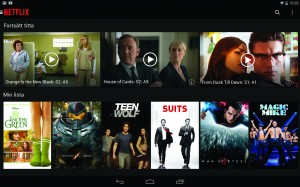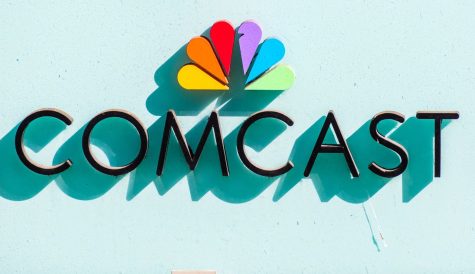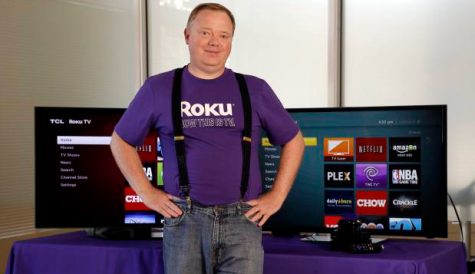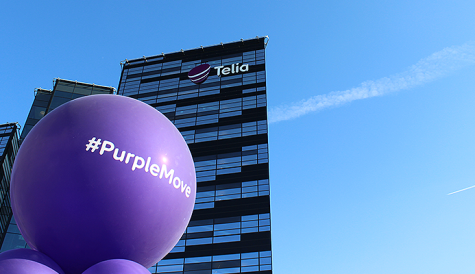The Netflix effect – OTT in Europe
Netflix’s next stage of its European expansion is now close, but will its success rate continue and how far is the SVoD giant informing the OTT strategies of other players in the European market? Andy McDonald reports.
Netflix has long been a poster-child for over-the-top video services. Its clean interface, effective in-house recommendation system, cross-device accessibility and refusal to tie users into long-term contracts have in many ways set a benchmark for what modern online video services should look like – and its growth rate speaks for itself.
Since the service made its first steps into Europe at the beginning of 2012 by launching in the UK and Ireland, it has grown its footprint to also include the Nordic countries of Norway, Finland, Sweden and Denmark, with the Netherlands following in 2013.
Though its existing presence in Latin America meant it did not have a standing start outside the US, as of the first quarter of this year, Netflix claimed 12.7 million international subscribers – on top of its 48.4 million US subscribers – and predicted there would be 50% year-on-year growth in Q2 due to the “rapid growth” in its international segment.
While its success story in Europe seems clear, Netflix is far from the only player in town. Recent research by the European Audiovisual Observatory revealed that there is now a staggering 3,088 on-demand services in the European Union, consisting of 1,104 catch-up TV services, 711 branded channels of broadcasters on open platforms and 409 VoD film services – the majority run by telcos or established media firms.
The next chapter of the Netflix story was announced in May when it detailed plans to launch in Germany, Austria, Switzerland, France, Belgium and Luxembourg in late 2014. By its own admission, the plan marked a “significant expansion” for the subscription service, but how difficult will it be for Netflix to make waves in these new markets, and how much push-back is it starting to see from a significant number of rivals across the pay TV and broadcast industry?
Scandinavian flavour
Though Netflix does not break down user numbers by country, independent research indicates that its service is proving a phenomenon in the Nordics – in part because of the market conditions in these countries. According to research by Futuresource Consulting, digital video revenues are expected to exceed packaged video revenues in Sweden for the first time this year, making it the first country to pass this milestone.
The firm noted a “significant shift” in Swedish consumer behaviour last year with a 24% decline in packaged video spend. This year, Futuresource expects digital video revenues to reach ?153, compared to ?146 million for packaged revenues, driven by growth of subscription video on demand services.
“Netflix has been a key driver of this and quickly became market leader,” says Futuresource senior market analyst, Joanna Wright, who admits that though Netflix looked like it would be a good fit for the Nordics, “the scale of the success has definitely exceeded our expectations.”
Despite facing rivalry in the Swedish OTT market from the likes of HBO Go and ViaSat-owned Viaplay, Wright claims that Netflix has “definitely dominated” since its launch. “Viaplay and HBO have responded well and have also been marketing aggressively. Both have very strong content. I think together they have all helped raise consumer awareness [for SVOD].” However, Wright adds that without the Netflix launch, the SVOD boom “probably wouldn’t have escalated quite so much.”
To understand the digital revolution taking place in Sweden, Wright says that a number of puzzle pieces fell into place at the right time. Broadband infrastructure being able to cope with new digital services was one factor, while the success of Spotify – a Swedish company – helped to prove the subscription business model, albeit in the music space. Sweden’s digital transformation is also not unique in the Nordics, with Norway and Denmark in particular showing similar trends.
Claus Bülow Christensen, innovation manager at GlobalConnect, a Danish provider of solutions for efficient and secure data networking, housing, and cloud services, says that for Netflix, the Nordic markets were like “low-hanging fruit”.
“What Netflix saw for the whole Nordic region was both that we had really fine IT infrastructure, cheap broadband connections, and none of the existing operators in any of the Nordic countries had really built an OTT-like service that people were actually using. At the same time we also had quite a TV-, video- and movie-savvy population,” says Christensen.
According to statistics from GlobalConnect Innovation, the analytics department of GlobalConnect, as of June 2014 Netflix penetration in Denmark was a huge 29% with 725,000 subscribers – establishing Netflix as the clear OTT winner in the market. In fact, according to Christensen, some 17% of these Netflix subscribers also access the US version using services like Unblock-Us – a VPN that blocks users’ online identity and lets them appear as though they are accessing sites from different countries in order to circumvent geo-restrictions. In essence, “Netflix’s biggest competitor in our market today is Netflix,” says Christensen.
Slightly older statistics from February reveal that Netflix’s penetration rate in Norway and Sweden was a similarly impressive, and dominant, 20% and 17% – with 380,000 and 880,000 subscribers respectively. [icitspot id=”221031″ template=”box-story”]
What seems astonishing is Netflix’s ability, in the Nordics, to trump rivals that have, at face value, better content. While the mantra “content is king” is often repeated in the broadcast industry, it just goes to show that accessibility and ease of use have a lot of clout – particularly when it comes to multiscreen OTT.
Waking up the market
One of Netflix’s most significant rivals in the Nordics when it went live there in late 2012 was Modern Times Group (MTG)-owned Viaplay. Initially launched as Viasat On Demand way back in May 2007, the service was rebranded in 2011 to reflect an “enhancement” of the service. Now live in Sweden, Norway, Denmark and Russia, Viaplay allows subscribers to use a single ID and password to access Viasat pay TV content on any internet-connected device.
This includes Hollywood movies, popular TV series like 24, Dexter and Sherlock, and even live sport such as Formula 1 and Premier League football – a key differentiator for the service. Newer movie titles like The Wolf of Wall Street and 300: Rise of an Empire can also be bought on a transactional basis.
Christensen says that one of Viasat’s major responses to Netflix entering the Nordic market was to lower its price. In Sweden, Viaplay now costs SEK79 (e8.55) per month for its basic service, compared to SEK89 for Netflix, after the latter raised its prices slightly earlier this year. To also access Viaplay sports content the monthly cost is SEK279.
According to MTG’s Viaplay boss Rikard Steiber, since Netflix’s entrance into the market there has been a “lot of momentum”, meaning that “consumers are starting to understand the benefits of using streaming video.” Steiber says: “We have seen very strong growth because ourselves and some of the other players have been doing a lot of marketing and basically waking up the market to some extent. I think it has been very beneficial for all of us.”
MTG has 62 TV channels across 38 markets, as well as 28 production companies in 16 countries, and Viaplay now accounts for one part of a broader and more multi-faceted digital strategy. In March of this year, the firm merged its Viaplay business with MTGx, its ‘digital accelerator’ unit to establish a “digital entertainment powerhouse” under the leadership of former chief digital officer Steiber.
The firm’s digital assets now include SVoD, TVoD and AVoD with ad-supported catch-up offered for a host of MTG channels across the Nordics at domains such as TV3play.dk, TV6play.no and TV8play.se. Beyond this Steiber notes that MTG is “ building a strong presence on YouTube,” as evidenced by its buyout last year of Swedish, youth-focused, YouTube multichannel network (MCN), Splay, and Steiber says that the firm is considering “more markets and more of these opportunities.”
In June MTG also launched Viagame – a video site that allows viewers to watch people playing videogames. The service is similar to Twitch, a site that Google’s YouTube bought earlier this year for a reported US$1 billion (e740 million), and Steiber sees great potential in it both as a money earner and a traffic generator. In Viagame’s first weekend, the site drew an audience of 600,000 unique viewers with no marketing. “Viagame is a free service today, but one that you could easily imagine there being something premium that you would have pay-per-view or a pay-for-extra-quality. Or there might be other transactional models around it that we’re looking to exploit as well,” says Steiber.
Awakening old giants
In the Danish market, another firm taking a broader approach in their digital strategy is leading cable operator YouSee. The firm, which is owned by telco TDC, started offering SVoD to its customers back in Autumn 2011, and in December 2012 launched a consumer OTT proposition called YouBio. Though the service boasted a catalogue that was arguably much stronger that Netflix’s at launch with newer and better movie titles, it failed to catch on in the same way.
“YouBio did have better content – that wasn’t where they lost on that battlefield. The battlefield was more in the smooth use of the interface and the broad availability of a service like Netflix and something that no one still can compete with on the market,” says Christensen.
TDC executive Casper Hald concedes that Netflix set a benchmark for accessibility and that with YouBio the firm underestimated “how important access was.” At launch YouBio was available to access through a dedicated, low-price Netgem set top box, on two types of smart TV and for iOS and Android.
“Basically, when Netflix launched they set the bar very high for how this should be available and how it should be working. Looking back, we learned a lot about meeting the consumers where the consumers are and that means that we need to have very broad accessibility,” says Hald.
Though the YouBio service still exists, and operates in partnership with pay TV firm C More, it is no longer a priority for YouSee. The firm is instead focused on providing SVoD as a bundled proposition for TDC customers and its new aim is to offer an additional premium layer of content on top of this through the TVoD window.
“We are not going to keep Netflix out of the market, because that’s not an option,” says Hald. “Basically what we are doing is we’re moving to current movies for rental and ownership, and we have licensed the Blockbuster brand, which is huge here in Denmark. We are now launching a full-scale premium VoD service, but it won’t be for a subscription.”
TDC bought the Blockbuster brand in Denmark in January and plans to launch the iTunes-style rental and ownership store in the market this autumn, with Hald leading the project as head of Blockbuster. While YouBio previously offered TVoD alongside its subscription content, the launch of Blockbuster.dk will give premium content a clearly differentiated home, and will be a place where viewers can buy the latest episodes of series that have already become popular in the later SVoD window on services like Netflix.
“We think that there’s a gap in the market for the current content, but with a different business model,” says Hald, who claims that re-launching Blockbuster will prove to be a “winning formula.”
However, not everyone agrees. While FutureSource’s Wright says that TVoD revenues are “not insignificant” she predicts it will only account for 20-25% of the digital business in the coming years.
Christensen, meanwhile, has been vocal in the local Danish media in claiming that TDC’s decision to buy Blockbuster is “really a stupid idea.” He says that “it’s a brand that, for many of the users, I’m sure it’s [associated] with some kind of sadness, seeing their shops closing down.”
Hald disagrees. “We’ve done a lot of surveys on the brand and the brand value. The most important thing is everyone knows the brand, so in the target audience 99% can recognise and know what Blockbuster is.”
Though Blockbuster proved not to be an innovative brand, Hald believes with its online relaunch, TDC can leverage the public’s familiarity with the name and offer a service that meets consumers where they are with a proposition they understand.
The eastern frontier
While Netflix has had an undeniable influence on the western European markets where it has launched to date, in eastern Europe, where it is yet to set its sights, it is not deemed as a threat. Artem Zassoursky, CEO of Russian VoD service Stream.ru says that while Netflix will likely move into Russia “sooner or later, we do not consider them a serious threat, because their brand is irrelevant in Russia. Moreover, we have much stronger ties with local content owners.”
Oleg Tumanov, founder and CEO of rival Russian service Ivi.ru agrees: “Russia, in my view, represents a challenging environment to Netflix due to high level of piracy, language, local content, local competition and legal system,” he says.
In Poland, Maciej Maciejowski, member of the management board in charge of new business development at Polish broadcaster TVN, believes Netflix could also struggle if it tries to move into the Polish market. “The majority, and by majority I mean 99% of the online VoD offering, is advertising supported – that’s the reality that has been created here.
Right now, to [be] entering with a paid offer, [you] must be very, very well prepared,” he says.
While central and eastern Europe is littered with home-grown and locally run OTT services, Central European Media Enterprises (CME) operates localised versions of its Voyo SVoD service across numerous central and eastern European markets, including the Czech Republic, Croatia and Romania.
Costi Mocanu, manager of Voyo Romania, says that though Voyo offers TVoD content, the SVoD layer is more popular and includes movie and TV content, including programmes from local CME network Pro TV. “In Romania, we have also produced three exclusive channels – Voyo Comedy, Voyo Cinema and Voyo Action – which are available only if you are a subscriber of Voyo,” says Mocanu. The idea behind these online channels, he explains, is to bridge the gap between linear and non-linear viewing. “We have seen that after 50 years of receiving linear television, people still prefer [it]. It’s a habit for the customers to wait and to get a schedule.”
“We are practically a BBC iPlayer or HBO Go, mixed with Netflix, plus something more,” says Macanu, explaining Voyo’s mixture of TV catch-up, SVoD movies and curated online channels. The service will also soon be available alongside a new AVoD service which is due to launch in Romania at the end of the month.
Pro TV Plus will distribute mainly archive content from the CME TV network on an ad-supported basis, preserving an exclusive Voyo catch-up window for the network’s most recent content.
Discussing Netflix’s growing influence on the continent, Mocanu says: “Netflix as a presence in Europe has to be considered based on the customer’s ability to speak the English language. My impression is that Netflix first targeted countries with a population that understands the English language and speaks it very well. It’s [been] Scandinavia, obviously the UK and Ireland, and then they’ve launched in the Netherlands. I do believe that when they do their next step this fall in France and Germany, they will start having content problems.”
Among these, he says, is the cost of not only translating, subtitling and dubbing English-language content, but also licensing locally-produced titles.
“I do not believe that House of Cards could be a decisive trigger in a country like Germany. But these are Netflix’s problems,” says Mocanu. “I do not believe they will come in the eastern markets earlier than eight to five years from now – I exclude Poland from this statement. Poland is part of Central Europe and they will probably launch there earlier than three years from now.”
Netflix’s next push
The location and number of territories that Netflix is set to move to next has taken some industry watchers by surprise. Though the French and German language conversion arguably makes it sensible for the firm to go live in Germany, Austria and Switzerland, and France, Belgium and Luxembourg all at once, there will still be challenges involved in launching in these countries.
Media analyst and senior consultant at PayMedia Consulting Group John Holland says that the language issues will make this next wave of launches “more difficult than in an English-language environment.” However, he says the “greater tolerance for subtitled material outside the UK” combined with the low cost of the service could help it to succeed.
FutureSource’s Wright says: “We don’t expect uptake [in France and Germany] to be as quick and as strong as it has been in Sweden, because cultural impacts, legacy consumer behaviour and the existing competitive landscape will play a significant role in France and Germany.”
German-based media expert and CEO and co-founder of consultancy TheBrainBehind Sebastian Becker agrees that while Netflix will “certainly gain a bit of the market” in Germany against existing rivals like Maxdome and Watchever, it will not see the same rate of growth as in the Nordics or even the UK.
“If you look at Netflix’s international launches, the results were kind of mixed: difficulties in Latin America, mainly due to payment solutions; big success in Scandinavia because operators weren’t really prepared; success I would say in the UK and Ireland in terms of getting traction in the market rather quickly,” says Becker. “In Germany I think it will be a bit more difficult and there are a few reasons for that. First the German landscape is of course difficult, because a lot of the content that is long-tail is still freely available on German TV. And while culturally Netflix is a brand that’s known to let’s say the international part of the population, it’s certainly not a household name in Germany, so it’s a bit easier to launch these American brands in the UK or Scandinavia.”
While we can only speculate as to whether Netflix’s famed algorithms have provided some statistical justification for its ongoing rollout choices, the firm has made no secret of its ambition and intention to become a global media company.
But how well it will fare when it starts to move further across Europe, outside of its English language-influenced comfort zone, is yet to be seen.




